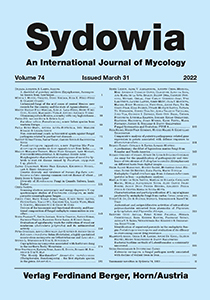
Diversity of Moniliaceous Fungi in Çamaltı Saltern, Izmir, Turkey Emine Irdem & Semra Ilhan Sydowia 74: 121-132 Published online on August 30th, 2021 This study aims to determine microfungal diversity (Moniliaceae family) in the Çamaltı Saltern, Turkey. Water samples were seasonally taken from four stations in the Çamaltı Saltern ponds. Microfungi were isolated by membrane filtration method using DRBC and DRBC10. The isolates have been identified using morphological and molecular techniques. The average numbers of all the fungal colonies were determined to be 14 CFU/100 ml and 28 CFU/100 ml on DRBC and DRBC10 media, respectively. A total of 35 species belonging to 5 genera have been identified. These genera were Acremonium (1 species), Aspergillus (14 species), Fusarium (2 species), Penicillium (16 species), and Trichoderma (2 species). According to their relative abundance, the dominant genus isolated on DRBC and DRBC10 medium was Penicillium (47 %). This study notes that the aquatic mycobiota of Çamaltı Saltern has a high diversity and most of the isolated species are inhabitants of hypersaline environments. Successful results were obtained by using DRBC and DRBC10 on the isolation of the species that have different salt requirements. Using molecular techniques as well as classical techniques, identification of microfungus has been complemental as the classical techniques are inadequate. This study represents the first survey of moniliaceous fungi in I˙ zmir Çamaltı Saltern and provides data on their diversity and distribution. Keywords: hypersaline, mycobiota, Aspergillus, Penicillium, microfungi. |
 |